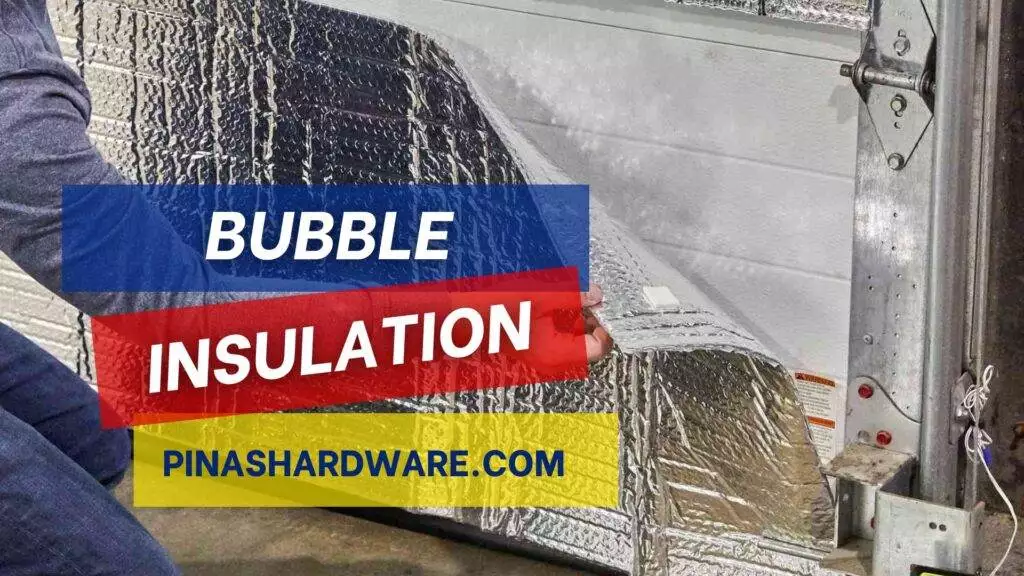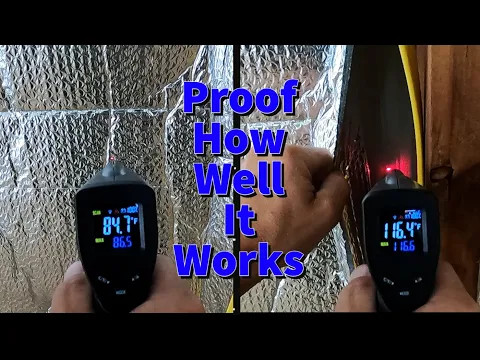A layer of air-filled bubbles, usually made of plastic film or aluminum foil, is positioned between reflective surfaces to create bubble insulation, a sort of thermal insulation. The conduction and radiation of heat are impeded by these barriers, which are bubbles. Radiant heat is reflected off the enclosed space by the reflective surfaces, further improving its insulating qualities. Insulating roofs, walls, flooring, and HVAC ducts in residential, commercial, and industrial buildings are just a few of the many uses for this flexible, lightweight insulation. Being a popular option for increasing comfort and energy efficiency, it effectively reduces heat gain or loss.
Bubble Insulation Prices
Bubble insulation prices vary depending on its brand, size, material, thickness, and reflectivity. Its price ranges from ₱2,500.00 to ₱5,500.00.
| Details | Size (Width x Length) | Material | Thickness | Reflectivity | Price |
| SuperFoil SF19+ | 1.2m x 10m | Aluminum Foil | 4mm | 97% | ₱2,500.00 |
| Bubble Guard | 1.2m x 25m | Aluminum Foil | 8mm | 95% | ₱3,800.00 |
| Reflectix | 1.5m x 30m | Reflective PET | 5mm | 96% | ₱4,200.00 |
| Insul-Aid Bubble | 1.0m x 50m | Aluminum Foil | 6mm | 98% | ₱5,500.00 |
| EcoFoil Bubble | 1.2m x 20m | Polyethylene | 10mm | 90% | ₱2,900.00 |
| HanXapart | 1.0m x 50m | Aluminum Foil | 2mm | 95% | ₱2,802.00 |

Advantages of Bubble Insulation
Thermal Insulation – By acting as a barrier to lessen heat transfer, the air-filled bubbles effectively provide thermal insulation and aid in preserving the proper temperature within a space.
Versatility – Its flexibility and light weight make it simple to install in various settings, including HVAC ducts, floors, walls, and roofs.
Reflective Properties – By reflecting radiant heat out of the enclosed space, the reflective surfaces—typically made of plastic film or aluminum foil—improve the insulating qualities of the material and increase energy efficiency.
Moisture Resistance – A lot of bubble insulation materials can withstand moisture well, which keeps mold and condensation from growing and preserving the quality of the air inside buildings.
Long-lasting and Robust – Bubble insulation frequently exhibits long-term performance and cost-effectiveness by withstanding harsh environmental conditions.
Disadvantages of Bubble Insulation
Limited R-Value – Compared to other insulation materials like fiberglass or foam board, bubble insulation usually has a lower R-value (thermal resistance), which could make it less effective in colder climates.
Vulnerability to Compression – Over time, especially in locations with high foot traffic or when under pressure, the air-filled bubbles in bubble insulation may compress, decreasing the insulation’s efficacy.
Puncture Susceptibility – The insulating qualities of bubble insulation may be jeopardized and performance may suffer due to punctures to the bubbles.
Moisture Permeability – Although certain bubble insulation materials are resistant to moisture, others may eventually permit moisture infiltration, which could result in problems like condensation, the growth of mold, and the insulation material’s deterioration.
Video about Bubble Insulation
FAQs
What is the mechanism of bubble insulation?
Bubble insulation is used to lessen heat transfer through conduction, convection, and radiation. Heat transfer is slowed down by the air-filled bubbles, and radiant heat is reflected off the reflective surfaces and out of the enclosed area.
When and where is bubble insulation useful?
Applications for bubble insulation include pipes, HVAC ducts, floors, walls, and roofs in commercial, industrial, and residential buildings.
How should bubble insulation be installed?
Usually simple to install, bubble insulation can be trimmed to size with a utility knife or pair of scissors. Depending on the situation, tape, adhesive, or staples can be used to secure it. For best results, appropriate installation methods should be used.
Is bubble insulation safe for the environment?
It is dependent upon the particular components of the bubble insulation. While some bubble insulation products might be recyclable or might contain materials that are harmful to the environment, others might not. For information on the product’s environmental impact, it is imperative to review the specifications.
What is the lifespan of bubble insulation?
The quality of the materials used, the installation technique, and the surrounding environment are some of the variables that can impact how long bubble insulation lasts. In general, bubble insulation has a long lifespan if installed and maintained correctly.


